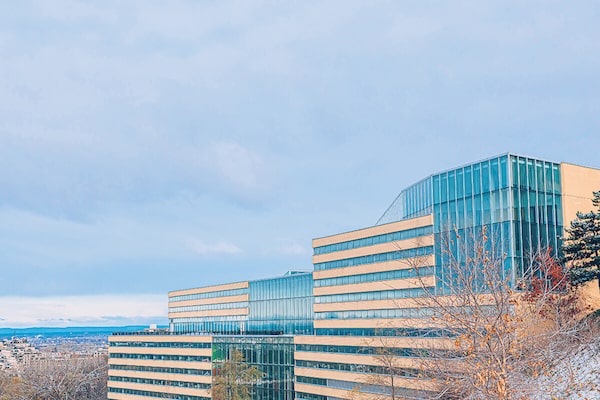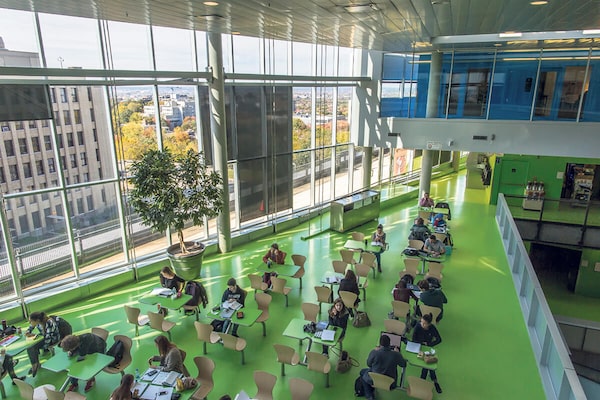
Supplied
Polytechnique Montréal was created 150 years ago in answer to pressing societal needs. Over time, the organization has evolved along with changing conditions – to continually provide the solutions that allow communities and industry to thrive.
While the many success stories speak for the impressive impact of Polytechnique Montréal and the professionals trained here, more work is required to tackle the complex challenges we face today – and equip coming generations of engineers with the skills and knowledge that can help to shape a better world.
Learning from the past inspires big-picture thinking
Engineering has always been a profession focused on problem-solving. In an increasingly connected world, with many challenges and issues intricately linked, engineers are now called upon to create solutions with the big picture in mind. This means that an innovation designed to address a particular challenge cannot cause problems in other areas. It means every solution has to be carefully scrutinized to ensure it contributes to the greater good.
We know from history, and especially from climate change, that it is important to consider both intended and unintended consequences. Yet how can we ensure engineers approach their work with this wider perspective? By educating them to be global citizens, by instilling openness and respect for other voices, by fostering competencies like critical thinking, civic engagement, innovation and collaboration. By empowering conscious and engaged professionals with the tools that enable them to bring change.
The idea that engineering has to be in sync with the needs of society has always been integral to our approach. At the time Polytechnique Montréal was founded, Quebec was developing rapidly. With industries and infrastructure being built, there was a strong demand for francophone engineers. From answering this call in 1873, our graduates have continued to play an instrumental role in enabling the success of industries and communities in Quebec and beyond.
They have helped to make names like Hydro-Québec and Bombardier synonymous with leadership as well as added discovery upon discovery to the list of accomplishments for Polytechnique Montréal.

Polytechnique’s Lassonde buildings have become a benchmark in sustainable construction.D. FARLEY
Yet while our path has been considered “tried and true,” I believe we have come to a fork in the road. To go forward with confidence requires us to not only celebrate past successes but learn from failures. Only by openly acknowledging and addressing challenges and issues can we build resilience in our organization and in society.
In my view, to stay relevant – and continue to deliver positive impact – in the coming years, we have to break down barriers to participation, both for entering the profession and for collaborating with people from industry and communities.
Promoting diversity and inclusion
A core focus for Polytechnique Montréal is to increase diversity and inclusion in the engineering profession, with a special dedication to encouraging the participation of women in honour of the students and staff who lost their lives in the December 6, 1989, shooting.
Progress has been made over the years, but more must to be done. According to Engineers Canada, the percentage of newly licensed female engineers is currently 18.1 per cent – while women make up more than half of the Canadian population.
At Polytechnique Montréal, women enrolled in the first year of bachelor degree programs make up 33 per cent (up from 17 per cent in 1996, when I was a student). About 20 per cent of our professors are women, and we also aim to increase the percentage of women in leadership positions.
We take these efforts very seriously and have thought deeply about how to ensure our institution is a place where women feel welcome, where they can flourish and achieve a high level of success in a profession that is still dominated by men.
There are two main requirements for moving forward. One, we need an action plan and a strong commitment to delivering tangible result. Two, we need to understand the barriers in order to overcome them.
Response to efforts to increase diversity among the student body – and include people from different backgrounds and with different challenges, such as students with autism and ADHD – has been very positive. What often comes up in my conversations with professors are experiences related to helping students overcome obstacles, and the resulting success is always a source of deep fulfilment.
This feedback reinforces our commitment to making the engineering profession accessible to diverse learners, to be more intentional about removing barriers, and to ensuring those who struggle receive support.
The next generation
When I look at the students who arrive at Polytechnique Montréal, I am very hopeful. I see a generation with a passion for addressing the major challenges we currently face. I see a generation that forces us to become more creative and look at how we deliver training and conduct research with fresh eyes.
For cohorts of future engineers, I envision more opportunities to engage with multidisciplinary teams as well as with community members. I imagine a collaborative environment where we bring together diverse voices to ensure the positive impact of solutions we design for some don’t bring negative consequences for others.
Only by working together can we create a brighter future for all.
Advertising feature produced by Randall Anthony Communications. The Globe’s editorial department was not involved.